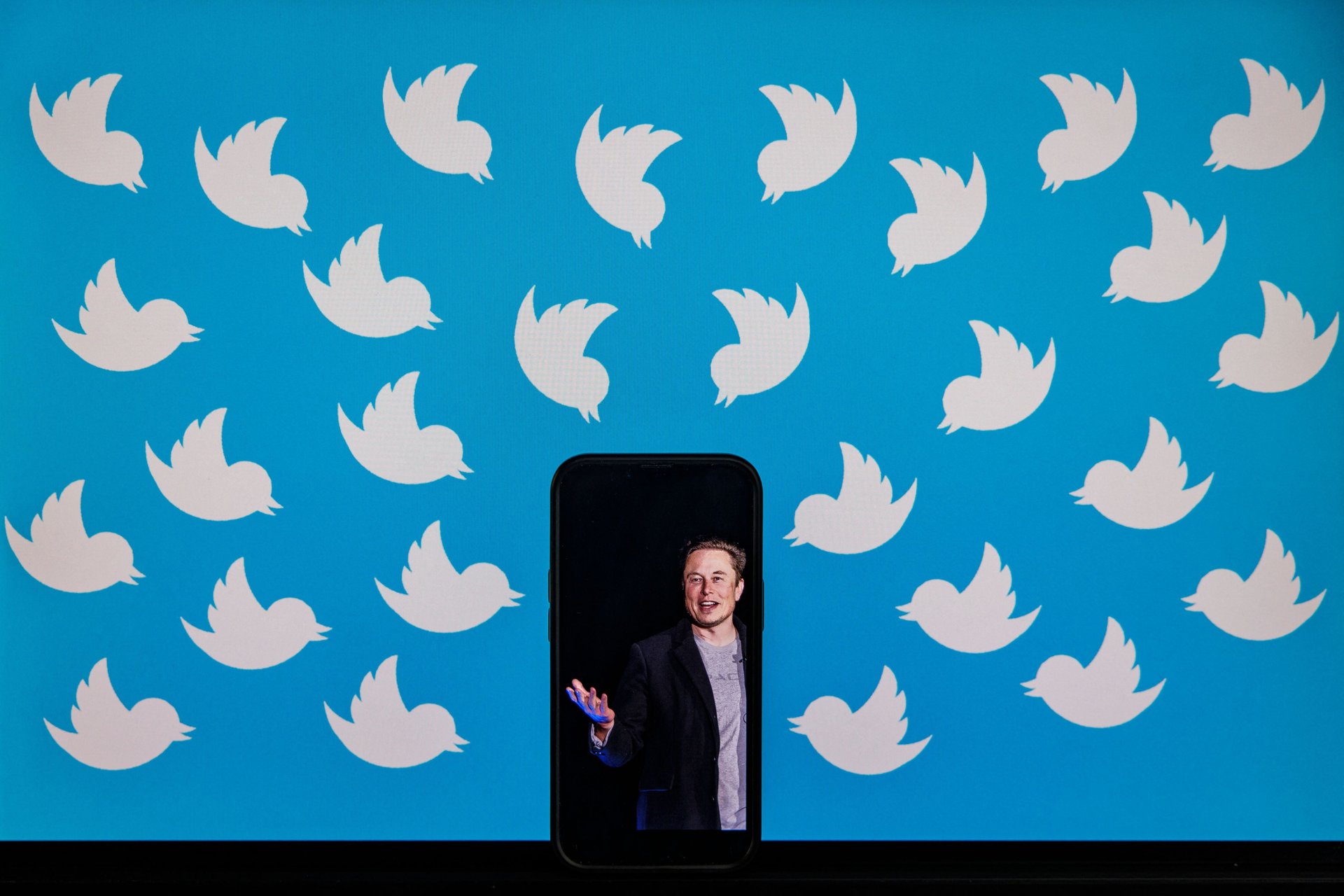This is the metric Elon Musk and Twitter are focusing on in court
What are Twitter's monetizable daily active users anyway?

Elon Musk is trying to wriggle out of his $44 billion deal to buy Twitter. At the heart of his legal argument is a still-unproven claim that Twitter misrepresented its user data, in particular how many of the users it counts are fake or spam.
Not only are Musk’s lawyers making this claim in court, but Musk himself won’t stop tweeting about it.
On Aug. 6, Musk posted a poll to his Twitter account. “Less than 5% of Twitter daily users are fake/spam,” he wrote. The options were “Yes” with three robot emoji and “Lmaooo no.“ (The latter won with 65% of the vote.)
While most publicly traded social media companies—such as Meta, Snap, and Pinterest—disclose their user figures as daily active users (DAU) or monthly active users (MAU), Twitter uses a proprietary metric it calls monetizable daily active users (mDAU).
As Musk grasps at straws for a reason to get out of a deal he now regrets making, he’s also publicly challenging Twitter to defend the admittedly convoluted way that it counts its users.
What does mDAU mean?
Twitter defines mDAU as “people, organizations, or other accounts who logged in or were otherwise authenticated and accessed Twitter on any given day through twitter.com, Twitter applications that are able to show ads, or paid Twitter products, including subscriptions.”
The company stresses monetizable means that they “could see ads or pay for a subscription, not that they will see ads.” In 2021, Twitter launched a subscription product, called Twitter Blue, which lets users pay a monthly fee for additional customization and features—for example, the ability to delay the publication of a tweet in case a user changes their mind or finds a typo.
Jasmine Enberg, a principal analyst at the market research firm Insider Intelligence, told Quartz that Twitter’s relatively small user base lends itself well to the mDAU metric. In its most recent financial results (pdf), Twitter counted 237.8 million mDAU, which is measly compared to Facebook’s 1.97 billion DAU (pdf). “mDAUs are more a reflection of user engagement, and Twitter’s value proposition to advertisers has always been the high level of engagement of its core users,” she said. “The more engaged users are, the more likely it is that they will see and respond to an ad.”
Enberg thinks that the switch from MAU to mDAU in 2019 was in part to mask some of Twitter’s slow user growth. Insider Intelligence estimates that Twitter’s global monthly user base will grow by 4.6% this year, but its US user base will decline by 0.5% and will continue to fall through 2025.
Elon Musk vs. the spam bots
While Musk is currently fighting with Twitter about bots and spam accounts, this complaint arose after Musk agreed to buy the company. The takeover agreement he signed with Twitter makes no mention of the company’s user base. Additionally, Musk said he wanted to buy the company to fix the alleged bot problem, so his argument that he cannot execute the deal because there’s a bot problem sounds—to put it mildly—invented. (“If our twitter bid succeeds, we will defeat the spam bots or die trying!” he tweeted on April 21.)
In its annual filing (pdf) to the US Securities and Exchange Commission (SEC), Twitter claims that, based on regularly conducted samples, less than 5% of its mDAU are “false or spam accounts.” That said, it also warns that the true number “could be higher than we have estimated.”
It’s definitely possible that Twitter’s mDAU undercounts spam and fake accounts. Insider Intelligence found that, in 2019, for the last fiscal quarter before the company stopped using MAU, about 10% of accounts were spam and fake accounts (and another 10% were businesses or duplicate accounts for already-counted users.)
But in order for this line of reasoning to be relevant in court, Musk’s legal team would have to demonstrate that the discrepancy would have a material adverse effect, a legal standard, on its ability to make money in the long term.
Ann Lipton, a securities law professor at Tulane University School of Law, said it’s not clear how far off the percentage of bots would need to be to be considered material. “I can just tell you that Musk would have to show it’s likely to have a significant, long term effect on Twitter’s finances; something so significant it would call the economics of the deal into question,” she said.
But, Lipton said, Twitter never made any legal statement in the takeover agreement about spam: “It said it had a process, and it estimated using its judgment that the number was 5%, and warned it could be higher—and that’s the statement Musk would have to show was false.”
